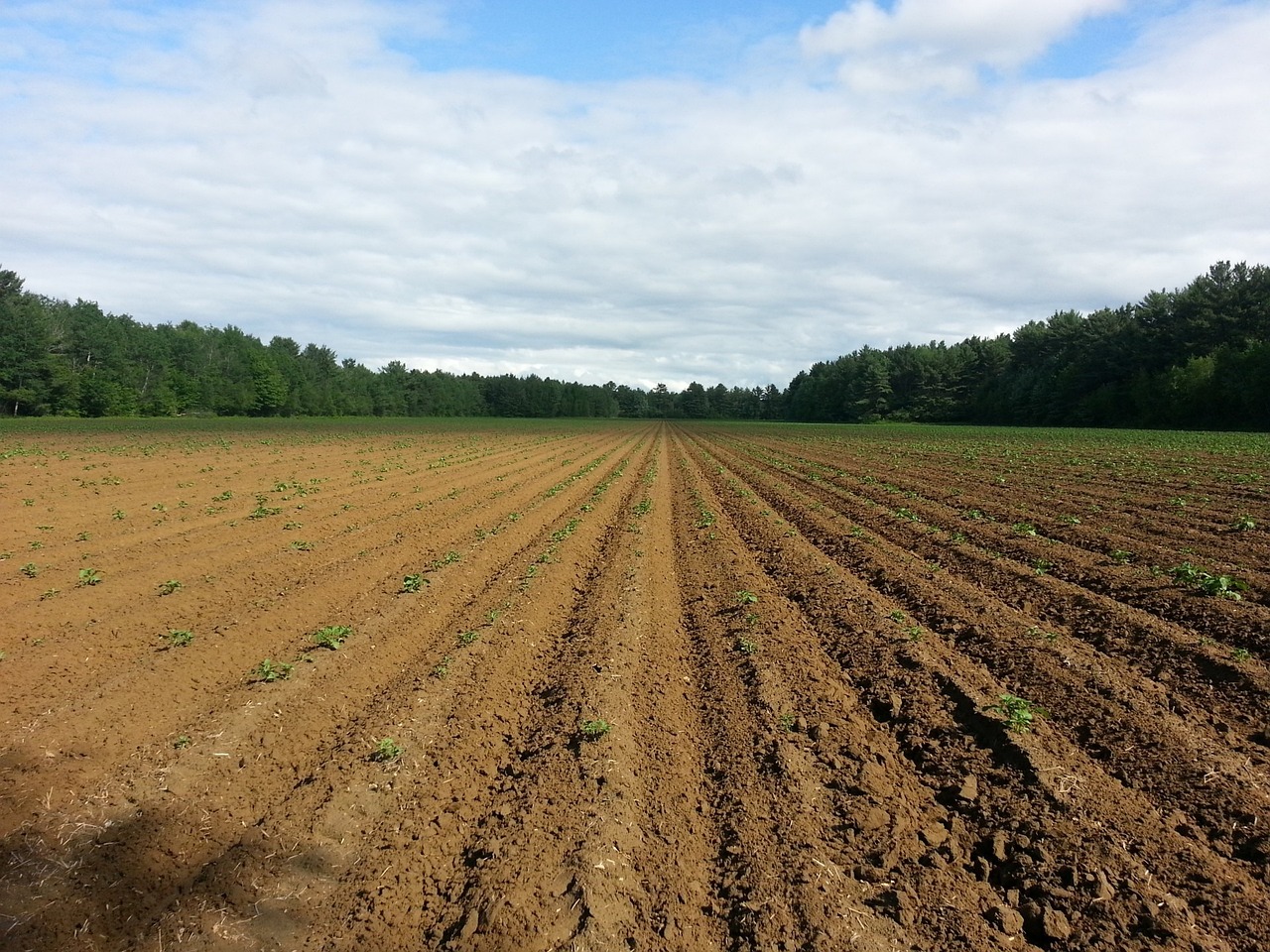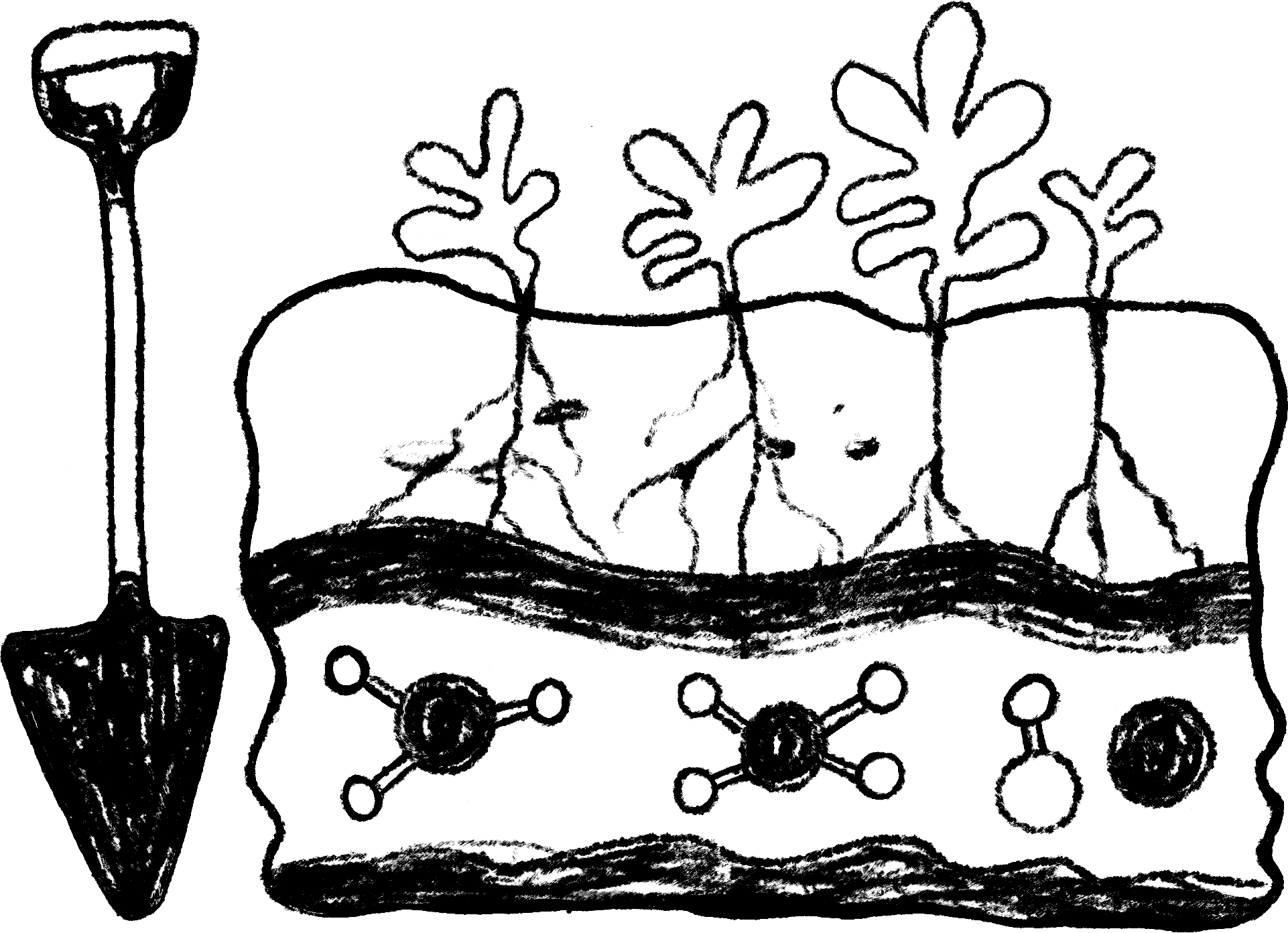Soil and Sustainability (Grades 6-8)
Students are introduced to the Dust Bowl and determine how to avoid another event like it in the future as they study soil texture, particle sizes, soil nutrients, and pH.

Background
Lesson Activities
Recommended Companion Resources
Credits
Author
Nourish the Future
Acknowledgements
This lesson is from the Soil and Sustainability unit created by Nourish the Future.
Sources
Standards
Indiana Content Area Standards
-
English Language Arts.Grade 6.RV.1
Acquire and use accurately grade-level appropriate general academic and content-specific words and phrases; gather vocabulary knowledge when considering a word or phrase important to comprehension or expression.
- Vocabulary in Literature and Nonfiction Texts.6.RV.3.2: Determine the meaning of words and phrases as they are used in a nonfiction text, including figurative, connotative, and technical meanings.
-
English Language Arts.Grade 6.SL.1
Listen actively and adjust the use of spoken language (e.g., conventions, style, vocabulary) to communicate effectively with a variety of audiences and for different purposes.
- Comprehension.6.SL.3.1: Interpret information presented in diverse media and formats (e.g., visually, quantitatively, orally) and explain how it contributes to a topic, text, or issue under study.
- Discussion and Collaboration.6.SL.2.2: Elaborate and reflect on ideas under discussion by identifying specific evidence from materials under study and other resources.
-
English Language Arts.Grade 7.RV.1
Acquire and use accurately grade-appropriate general academic and content-specific words and phrases; gather vocabulary knowledge when considering a word or phrase important to comprehension or expression.
- Vocabulary in Literature and Nonfiction Texts.7.RV.3.2: Determine the meaning of words and phrases as they are used in a nonfiction text, including figurative, connotative, and technical meanings; analyze the impact of a specific word choice on meaning and tone.
-
English Language Arts.Grade 7.SL.1
Listen actively and adjust the use of spoken language (e.g., conventions, style, vocabulary) to communicate effectively with a variety of audiences and for different purposes.
- Comprehension.7.SL.3.1: Analyze the main ideas and supporting details presented in diverse media and formats (e.g., visually, quantitatively, orally) and explain how the ideas clarify a topic, text, or issue under study.
- Discussion and Collaboration.7.SL.2.1: Engage effectively in a range of collaborative discussions (e.g., one-on-one, in groups, and teacher-led) on grade- appropriate topics, texts, and issues, building on others ideas and expressing personal ideas clearly.
- Discussion and Collaboration.7.SL.2.2: Investigate and reflect on ideas under discussion by identifying specific evidence from materials under study and other resources.
-
English Language Arts.Grade 8.RV.1
Acquire and use accurately grade-appropriate general academic and content-specific words and phrases; gather vocabulary knowledge when considering a word or phrase important to comprehension or expression.
- Vocabulary in Literature and Nonfiction Texts.8.RV.3.2: Determine the meaning of words and phrases as they are used in a nonfiction text, including figurative, connotative, and technical meanings; analyze the impact of specific word choices on meaning and tone, including analogies or allusions to other texts.
-
English Language Arts.Grade 8.SL.1
Listen actively and adjust the use of spoken language (e.g., conventions, style, vocabulary) to communicate effectively with a variety of audiences and for different purposes.
- Comprehension.8.SL.3.1: Analyze the purpose of information presented in diverse media and formats (e.g., visually, quantitatively, orally) and evaluate the motives (e.g., social, commercial, political) behind its presentation.
- Discussion and Collaboration.8.SL.2.1: Engage effectively in a range of collaborative discussions (e.g., one-on-one, in groups, and teacher-led) on grade- appropriate topics, texts, and issues, building on others ideas and expressing personal ideas clearly.
- Discussion and Collaboration.8.SL.2.2: Examine, analyze, and reflect on ideas under discussion by identifying specific evidence from materials under study and other resources.
 Soil is made up of three different particle sizes in varying amounts: sand, silt, and clay. Clay are the smallest particles, yet they hold the most water and nutrients. Clay particles are charged particles and can hold onto the ions in nutrient compounds, allowing roots to easily absorb and use them. The disadvantage of clay soil is that it can become water-logged and when it dries, the soil surface may become hard as rock. Clay soils also may become easily compacted, since the spaces between the particles are so small. Water does not easily move through clay soils, so it is said to be less permeable than other soils.
Soil is made up of three different particle sizes in varying amounts: sand, silt, and clay. Clay are the smallest particles, yet they hold the most water and nutrients. Clay particles are charged particles and can hold onto the ions in nutrient compounds, allowing roots to easily absorb and use them. The disadvantage of clay soil is that it can become water-logged and when it dries, the soil surface may become hard as rock. Clay soils also may become easily compacted, since the spaces between the particles are so small. Water does not easily move through clay soils, so it is said to be less permeable than other soils. The sediment sizes and percentages of each in a sample are determined by the history of geologic and climatic events in an area.
The sediment sizes and percentages of each in a sample are determined by the history of geologic and climatic events in an area.